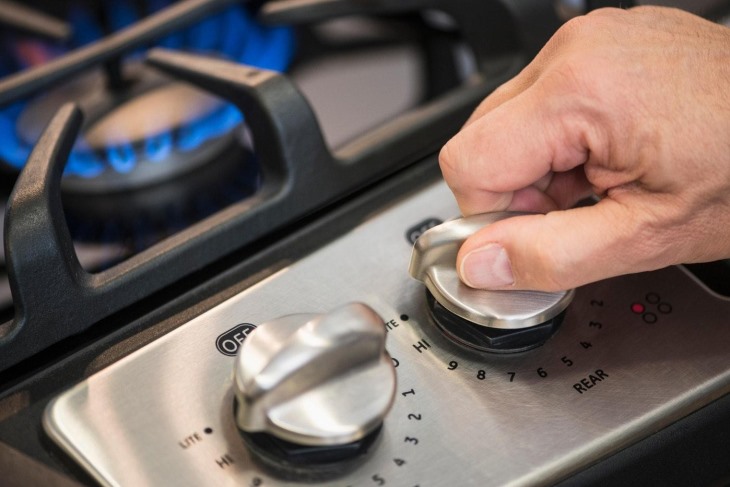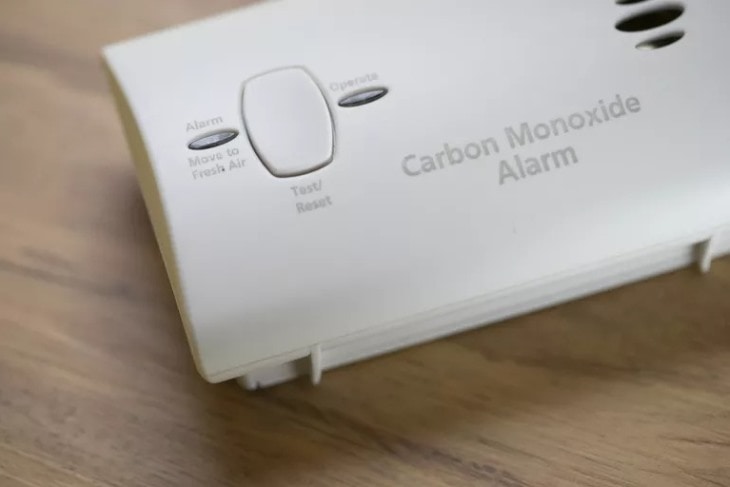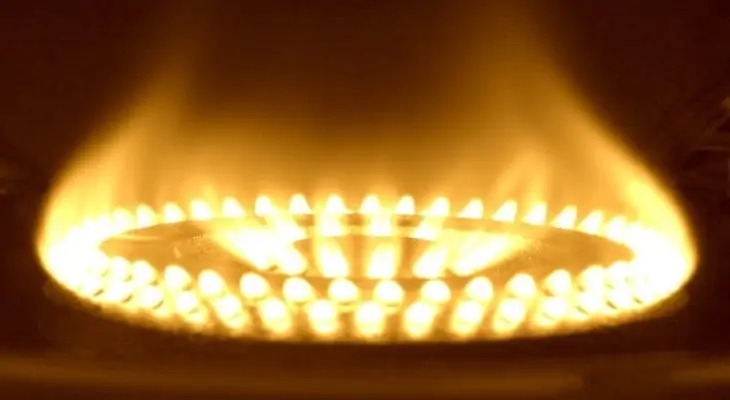Gas cooktops are loved by cooks everywhere! However, if a gas stove is not working properly, it can cause danger to the people in the home. If the familiar blue flames on your stove suddenly look more orange or yellow, it could be a cause for concern. However, this problem is often easy to fix!
If you’re seeing yellow or orange flames on your gas burner, it’s mainly because of partial combustion (insufficient oxygen) due to some kind of a blockage on the burner portholes or ignitor. Most often, you can simply clean the burner off to fix the issue.
Partial combustion could also be caused by the wrong orifice fittings on the regulator valves for the gas stove. Orifices can be replaced or adjusted to fix the amount of gas being released from the valve.
Table of Contents
What Causes an Orange or Yellow Flame on a Gas Stove?
Typically, your gas burners will produce a blue flame with a yellow tip. If your stove flame looks more orange or yellow throughout, that is a good sign that there is an improper mix of fuel and oxygen during the combustion process. Orange or yellow flames on a gas stove are usually caused by insufficient oxygen.
Can a Yellow or Orange Flame on a Gas Stove be Fixed?
Yes, and the process is most often quite simple!
Cut Out the Gas Supply to the Stove

This is an important safety measure! Turn off the electricity and the gas to the stove before you attempt any project involving the stove. Contact with any energy sources (like electricity or gas) may result in injury or death.
Check the Manual
The manufacturer manual may have special instructions or indications for issues with partial combustion. Read the manual so that you are familiar with the procedures for your particular stove. Pay attention to any warnings or suggested safety measures.
Clean the Stove Thoroughly

Often, yellow or orange flames on a gas stove are due to soot and residue inside the burner portholes. Use a small brush, like a toothbrush, and some dish soap or degreaser to thoroughly clean the burner holes and ignitor.
If you want to really deep clean your range, disassemble each burner and give it a good scrub! Just make sure you put each piece back where it belongs.
Check all Orifices
Orifices are the small, brass fittings that attach to the stove’s valves. These tiny but important parts regulate the amount of gas that flows to the burners. If your stove has the wrong orifices or they are not fully attached, that may be responsible for your yellow stove flames.
Check the stove. There is usually a plastic bag of parts taped to the stove somewhere. There should be extra orifices in the bag. Additional orifices are available for sale as well. Different orifices are required for propane and natural gas. Make sure that the correct orifices are attached securely to the valves.
Turn Off Your Humidifier
This may sound a bit odd but there’s a very good chance that your humidifier is turning the burner flame orange! A humidifier is designed to throw tiny droplets of water into the air. Those little drops of tap water contain sodium chloride or salt. A home with a water softener will have higher levels of salt in the tap water.
The salt in the tap water reacts with the flame to produce orange light. This is not dangerous! To test this in your home, turn off the humidifier for at least 4 hours. Then, turn on the stove. If the stove flame is blue again, then the orange flame was caused by the salt in your tap water reacting with the flame.
Call an Appliance Service Technician
Do you still have orange flames? If you are stumped, call in a trusted service technician!
Is an Orange or Yellow Flame on a Gas Stove Dangerous?
Here’s the science behind those orange and yellow flames!
Combustion Principle
The combustion principle takes us back to high school chemistry. Basically, a substance or fuel mixes with oxygen and gives off heat. In the case of your stove, the fuel is propane or natural gas, and the heat is the flame of your burner.
The chemical reaction of combustion creates new substances. A well-functioning gas burner will put out carbon dioxide and a safe amount of carbon monoxide. However, if there is not enough oxygen in the chemical equation, your stove will put out excess carbon monoxide.
Risk of Excess Carbon Monoxide

Blue flames on your stove are a good indicator that the carbon monoxide levels released by the stove during combustion are at a safe level. Yellow or orange flames may be a sign that incomplete combustion is occurring. If combustion is incomplete, there will be more carbon monoxide released into the air.
Carbon monoxide is called the “silent killer”. It is odorless and difficult to detect. When you breathe in carbon monoxide, it replaces oxygen in the bloodstream. This will deprive the body’s major organs of the oxygen that is necessary for survival.
A carbon monoxide detector is a great resource to put your mind at ease and protect your family. If you have a gas stove, install a detector in your kitchen.
Signs of Carbon Monoxide Poisoning
Since carbon monoxide is odorless, watch for these signs of carbon monoxide poisoning:
- Headache
- Dizziness
- Weakness
- Nausea or vomiting
- Blurred vision
- Shortness of breath
- Confusion
- Loss of consciousness
Carbon monoxide poisoning can lead to permanent brain damage and even death.
What to Do If You Suspect Carbon Monoxide Poisoning
If you suspect carbon monoxide poisoning in yourself or a family member, turn off all appliances and open the windows. Then, move everyone, including pets, out of the home immediately. Do not re-enter the house! Call 911. Emergency dispatchers will send a technician to examine your home and appliances to look for leaks.
If there are severe symptoms of carbon monoxide poisoning, call 911 and request emergency medical transport. Prompt medical treatment is vital for recovery from carbon monoxide poisoning.

